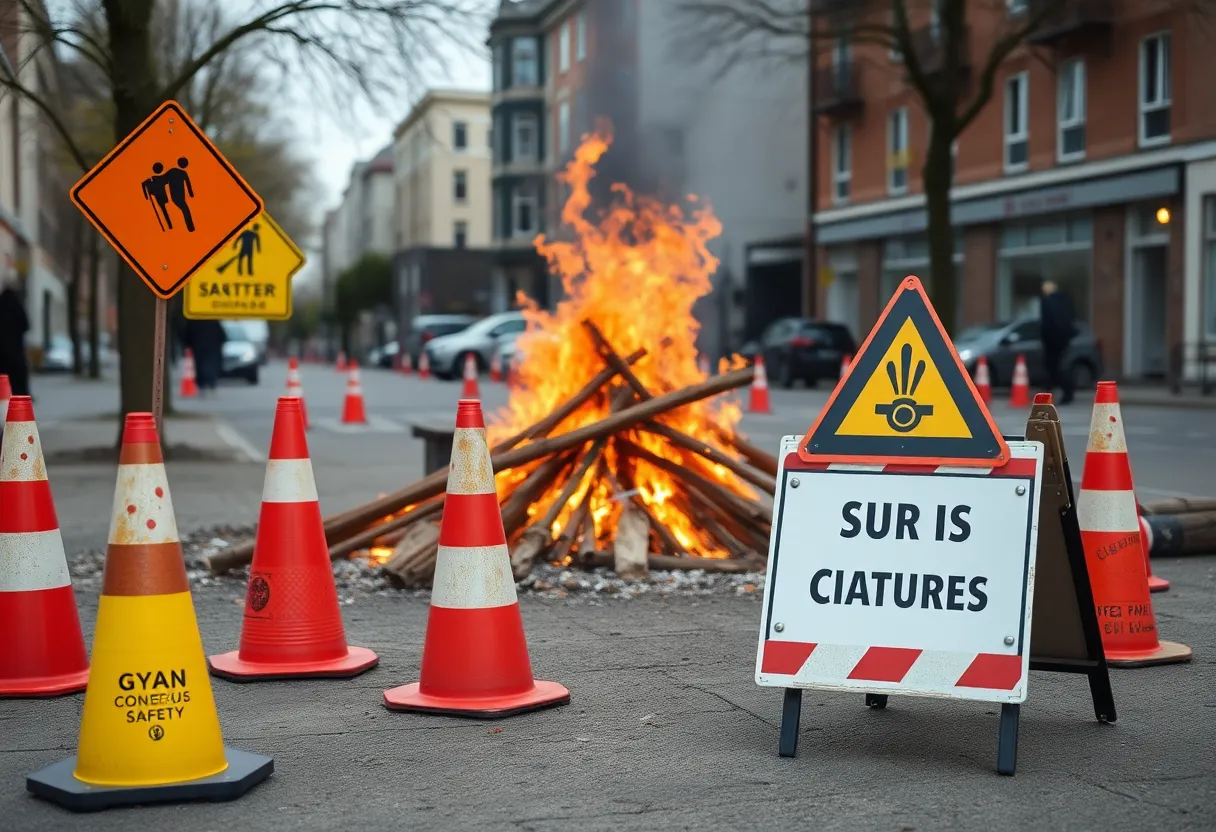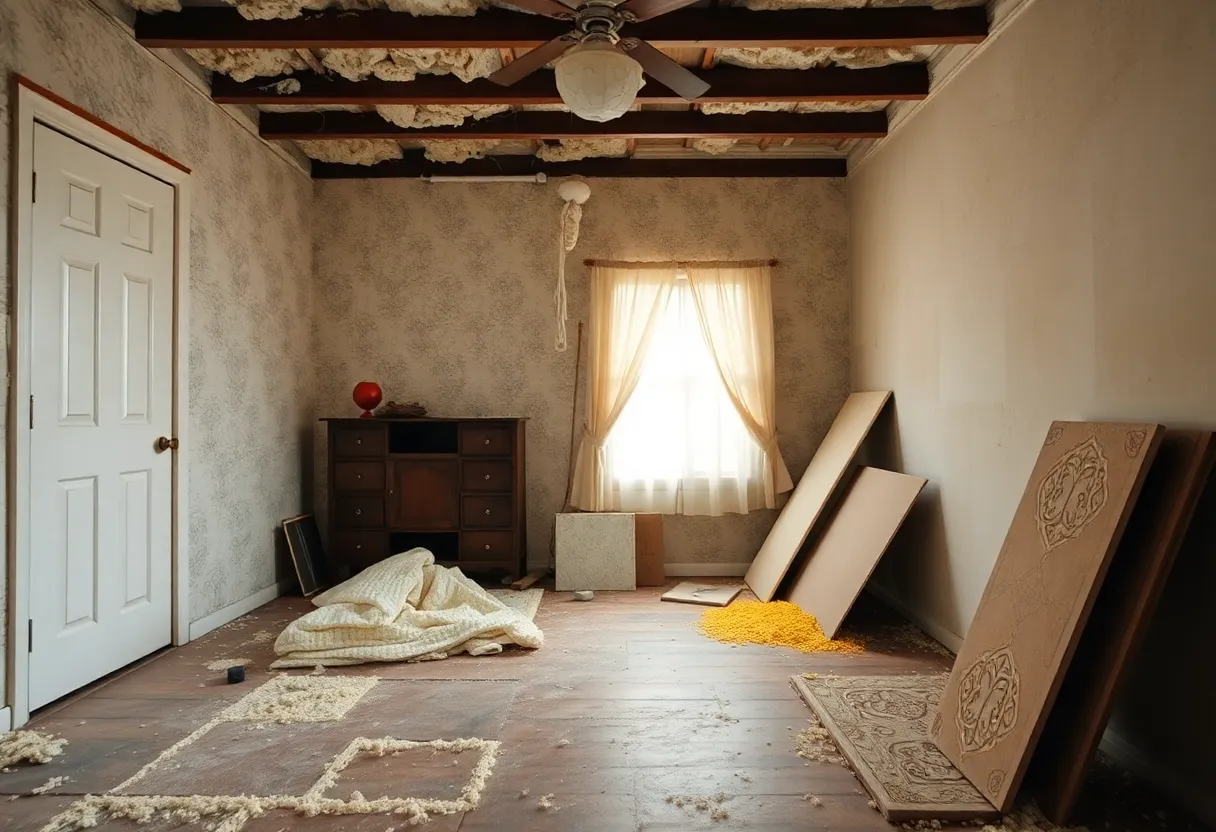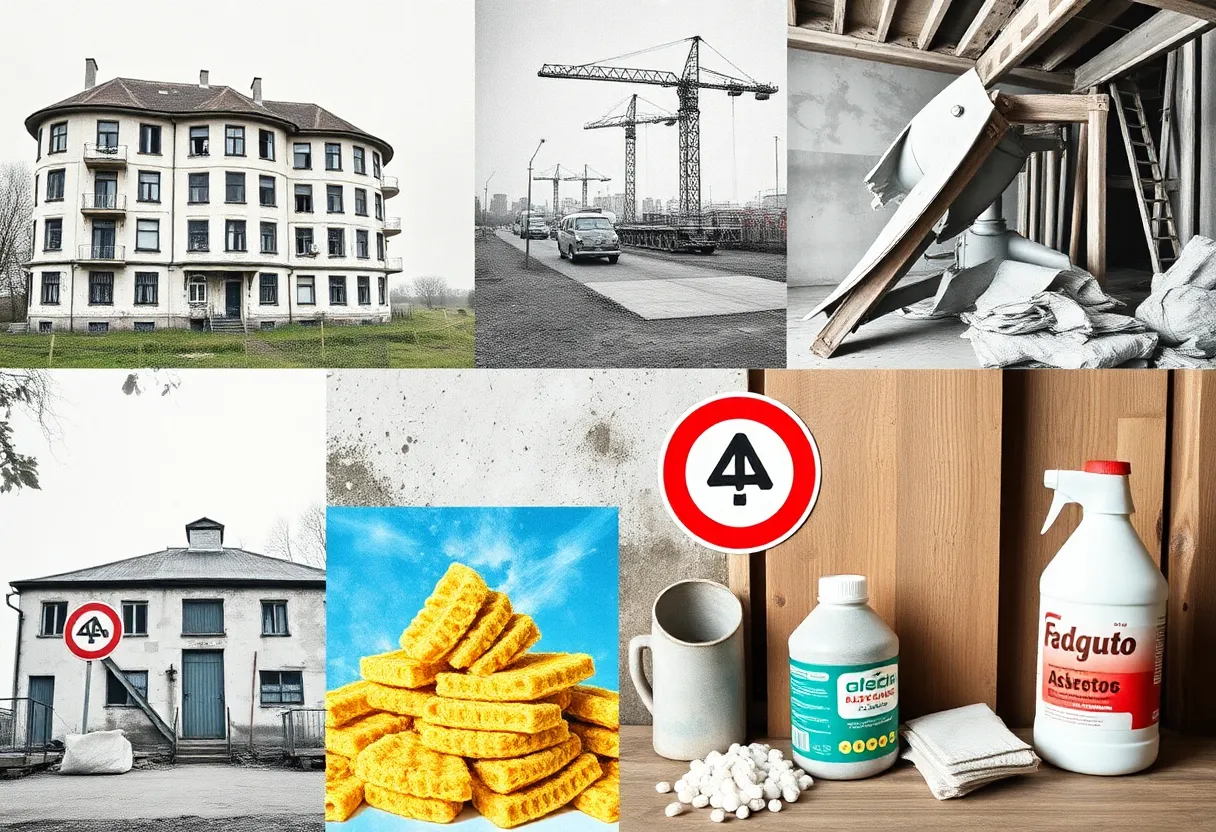News Summary
Safety fears have emerged over a loyalist bonfire in south Belfast after suspected asbestos was found. The NIEA is set to begin removal, but community anxieties are high as the lighting date approaches. Local representatives are demanding action and clarity over the situation, emphasizing the risks posed to public health and safety. Cultural tensions are also rising amidst concerns over the bonfire’s tradition and potential hazards.
Asbestos Scare at Loyalist Bonfire Site Raises Public Health Concerns
Fresh safety concerns have emerged surrounding a loyalist bonfire site in south Belfast, set to be lit on a Friday night. The Northern Ireland Environment Agency (NIEA) has confirmed the discovery of suspected asbestos in five locations across the bonfire site, with approximately 20kg of material already removed. This alarming development has stirred anxiety within the community, particularly as the bonfire is situated near an electricity substation that supports two hospitals.
Public Health at Risk
The potential hazards associated with the bonfire have drawn criticism and concern from local political representatives and community members. The Police Service of Northern Ireland (PSNI) recently rejected a request from Belfast City Council to safely remove the bonfire, raising questions about public safety as the scheduled lighting approaches. Experts from the NIEA conducted an inspection and indicated a strong likelihood that additional asbestos fragments remain at the site, amplifying fears of exposure.
The NIEA has outlined plans to initiate the removal of all asbestos found on the site starting on July 16, 2025. The dismantling process is expected to prolong over several weeks, but community voices are growing increasingly impatient for timely action. Some members have expressed vehement concerns over the safety of individuals in the area, especially should the fire be ignited prior to proper site decontamination.
Council Members Demand Answers
In the wake of these developments, local council members have begun to voice their apprehensions. One SDLP councillor recently addressed the public’s safety, stating that lighting the bonfire without adequate measures could pose significant risks. Concurrently, another councillor from the DUP called for immediate clarification regarding the specific type and locations of the asbestos identified by the NIEA. This level of inquiry emphasizes the urgency and gravity of the situation affecting public health.
Cultural Tensions Emerge
The loyalist bonfire tradition typically sees hundreds of bonfires lit in advance of the Orange Order’s July 12 parades, often becoming contentious due to the inclusion of flags, effigies, and political propaganda. This year, a controversial bonfire in Co Tyrone has raised eyebrows after featuring an effigy of migrants in a boat, leading to widespread condemnation from political figures and numerous organizations for perpetuating hate.
Sinn Féin MLA has denounced such displays as rooted in “vile, far-right and racist attitudes,” a sentiment that resonates through various communities amid this season of celebration. Authorities have had to issue warnings regarding the planned bonfire at the Meridi Street site, with officials, including Northern Ireland’s environment minister, vocally opposing attendance at the event due to the possible risk of asbestos exposure.
Community Frustrations and Calls for Leadership
Despite the clear health risks and potential for disaster, members of the local community have expressed frustration over perceived attacks on their cultural heritage linked to the bonfire traditions. This tension highlights a complex intersection of culture, safety, and community identity. In the context of these growing concerns, the local council has attempted to engage a waste management company to facilitate the safe removal of the hazardous material; however, they have faced considerable challenges, including disruptions from ongoing bonfire preparations.
The environment minister has previously acknowledged the difficulties in addressing safety issues surrounding the bonfire, which has now gained heightened urgency amidst rising public anxiety. As the lighting date approaches, many political representatives and community voices are emphasizing the prioritization of public safety and critical infrastructure in ongoing disputes surrounding these traditional bonfire celebrations.
A Cautionary Reminder
The situation at the loyalist bonfire site serves as a stark reminder of the potential hazards that can arise when cultural celebrations intersect with public health and safety. It is a vital moment for leaders, both political and community-based, to step forward and address the concerns, ensuring that festivities do not come at the expense of community well-being. As the date nears, the call for action is clear: safety first, before celebration.
Deeper Dive: News & Info About This Topic
HERE Resources
Bonfire Ignites Controversy over Asbestos Site in Belfast
New Regulations Signal End of Chrysotile Asbestos Use
Controversial Northern Ireland Bonfire Ignites Amid Asbestos Warnings
Frank Krohmer Takes Action Against Corporations in Mesothelioma Case
The Asbestos Bonfire Dilemma: Tensions Rise in South Belfast
Concerns Over Asbestos at South Belfast Bonfire Site
Concerns Over Belfast Bonfire Next to Asbestos Dump
Chrysotile Asbestos Ban Faces Legal Hurdles in the U.S.
Heightened Tensions as Asbestos Threat Looms Over Belfast Bonfire Site
Tragic Loss of Former Teacher Sparks Asbestos Concerns
Additional Resources
- BBC News: Asbestos Scare at Loyalist Bonfire Site Raises Public Health Concerns
- Wikipedia: Asbestos
- The Guardian: Failure to Tear Down Belfast Bonfire
- Google Search: Loyalist bonfire controversy
- BBC News: Health Risks Linked to Bonfire Traditions
- Google Scholar: Public health and bonfires
- The Guardian: Cultural Tensions and Bonfire Traditions
- Encyclopedia Britannica: Public Health



















